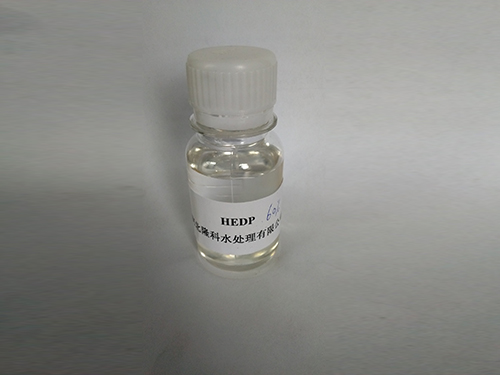1 Hydroxyethylidene 1 1 Diphosphonic Acid HEDP - Superior Scale & Corrosion Inhibitor

As the global demand for effective scale and corrosion inhibitor chemicals rises, **1 hydroxyethylidene 1 1 diphosphonic acid hedp** has emerged as a front-line additive across industrial water treatment sectors. This article, presented by Hebei Longke Water Treatment Co., Ltd. (www.lkpbtc.com), examines industry trends, technological advancements, application scenarios and essential product information for 1 hydroxyethylidene 1 1 diphosphonic acid hedp.
Contact us:
Tel: 86-319-6678982; +86-18733938789; +86-16632965809; +86-15030182392
Email: sale@longkehg.com
Address: No. 3, North of Haohua East Road, North Park, Neiqiu county Industrial Zone, Xingtai City, Hebei Province.
Product Overview – 1-Hydroxy Ethylidene-1,1-Diphosphonic Acid (HEDP)
1-Hydroxy Ethylidene-1,1-Diphosphonic Acid (HEDP), also known as **1 hydroxyethylidene 1 1 diphosphonic acid hedp**, is a top-tier organophosphorus acid scale and corrosion inhibitor. With CAS No. 2809-21-4, this chemical stands out for its superior chelating capacity, stability against chlorine oxidation, excellent thermal tolerance, and long operational lifespan in water treatment systems.
Further product details can be found at 1-Hydroxy Ethylidene-1,1-Diphosphonic Acid(HEDP) Product Page.
Main Technical Parameters of 1-Hydroxyethylidene 1 1 Diphosphonic Acid HEDP
| Parameter | Specification | Typical Value | Standard / Reference |
|---|---|---|---|
| Appearance | Colorless to pale yellow transparent liquid / white powder | Pale Transparent Liquid | HG/T 3662-2000 |
| Active Acid (%) | 58.0 min (liquid), 89-91 (solid) | 60.0 (liquid); 90.0 (solid) | HG/T 3662-2000 |
| Phosphorous acid (as PO3%,) | 2.0 max | 1.4 | Tested in lab |
| Phosphoric acid (as PO4%) | 0.8 max | 0.6 | Industry standard |
| pH (1% aqueous solution) | 2.0 max | 1.6 | ISO 10523 |
| Chloride (as Cl- ; %) | 0.02 max | 0.01 | Tested in lab |
| Fe, mg/L | 10.0 max | 7.5 | Test Method |
| Density (20°C), g/cm3 | 1.30-1.40 | 1.35 | Standard Test |
Industry Trend Analysis: 1 Hydroxyethylidene 1 1 Diphosphonic Acid HEDP & Scale and Corrosion Inhibitor Chemicals
With rapid industrialization, the need for high-performance scale and corrosion inhibitor chemicals in industrial recirculating cooling water, boilers, and cooling tower systems is paramount. The push for energy conservation, plant operational efficiency, and asset lifetime extension is fueling global demand for 1 hydroxyethylidene 1 1 diphosphonic acid hedp. According to WaterOnline, the global market for corrosion and scale inhibitors is expected to surpass $8.5 billion by 2028, with organophosphonates like HEDP leading the segment.
Emerging technologies—such as nanocomposite inhibitors and sustainable, low-phosphorus blends—are raising the bar for efficiency and environmental compliance. However, **1 hydroxyehtylidene 1 1 diphosphonic acid hedp** continues to hold its place as a gold-standard scale and corrosion inhibitor, validated by robust field performance and cost-effectiveness.
Key Application Scenarios
- Industrial Cooling Towers: Provides a long-lasting barrier against calcium carbonate and other scale formations; commonly used as scale and corrosion inhibitor for cooling tower.
- Circulating Water Systems: Inhibits deposition and corrosion in complex system metallurgy.
- Reverse Osmosis, RO Systems: Protects sensitive membranes from fouling and scale buildup.
- Boilers and Heat Exchangers: Controls scaling in both steam and hot water circuits.
- Oilfield Water Pipelines: Mitigates scale and corrosion risks during enhanced oil recovery.
- Textile, Paper and Leather: Used as a chelating agent and stabilizer.
Technological Attributes & Comparative Data Visualization
Advantages of Using HEDP in Scale and Corrosion Inhibition
- Outstanding Scale Inhibition: Prevents formation of calcium carbonate, calcium sulfate, barium sulfate, and other mineral deposits.
- Superior Corrosion Control: Forms stable chelation complexes with metal ions, reducing metal corrosion rates significantly in recirculating systems.
- High Temperature & pH Stability: Maintains efficiency in a wide operational window (up to 250°C, pH 1.0–8.0).
- Excellent Chlorine Resistance: Demonstrates strong stability under oxidative conditions, especially in chlorinated environments.
- Low Toxicity and Biodegradability: Favored in environmentally compliant water treatment programs.
- Compatibility: Works synergistically with polycarboxylates, zinc salt, and other common inhibitors.
Why Choose Hebei Longke Water Treatment Co., Ltd. for Your HEDP Supply Needs?
- Extensive Production Capabilities: Industrial-scale synthesis ensures steady supply and high product purity.
- Technical Expertise: Decades of R&D experience in scale and corrosion inhibitor chemicals, validated by numerous successful installations worldwide.
- Global Compliance: Products meet international water treatment standards for quality and safety (Springer Water Science).
- Responsive Customer Support: Multilingual team available via phone/email for technical support, logistics, and after-sales service.
Frequently Asked Technical Questions on 1 Hydroxyethylidene 1 1 Diphosphonic Acid HEDP
Key Takeaways, Industry Authority & References
The adoption of 1 hydroxyethylidene 1 1 diphosphonic acid hedp as a preferred scale and corrosion inhibitor underscores its crucial role across industries facing demanding water system challenges. With consistent improvements in thermal stability, chelation efficiency, and environmental impact, it remains a solution of choice for manufacturers and operators committed to efficiency and sustainability.
Authoritative references:
- Water Online: Global Market Value and Trends (2022-2028)
- Springer Water Science: Corrosion & Scale Inhibitors in Modern Water Systems
- Chemical Safety Facts: HEDP – Chemical Profile and Safety Regulations
- ResearchGate (Journal of Cleaner Production): Scale and Corrosion Inhibition in RO Systems
- For more details or expert consultation, contact Hebei Longke Water Treatment Co., Ltd.:
- Official Website: https://www.lkpbtc.com
- Email: sale@longkehg.com
- Phone: 86-319-6678982; +86-18733938789; +86-16632965809; +86-15030182392
- Address: No. 3, North of Haohua East Road, North Park, Neiqiu county Industrial Zone, Xingtai City, Hebei Province.
-
Water Treatment with Flocculant Water TreatmentNewsJun.12,2025
-
Polymaleic AnhydrideNewsJun.12,2025
-
Polyaspartic AcidNewsJun.12,2025
-
Enhance Industrial Processes with IsothiazolinonesNewsJun.12,2025
-
Enhance Industrial Processes with PBTCA SolutionsNewsJun.12,2025
-
Dodecyldimethylbenzylammonium Chloride SolutionsNewsJun.12,2025





